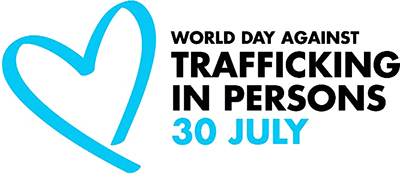-Children in the spotlight as the World commemorates the Day against Trafficking in Persons
This year, the day will be commemorated under the banner of “responding to the trafficking of children and young people”. Children comprise a significant proportion of identified victims of trafficking in persons globally, with the United Nations Office on Drugs and Crime’s Global Report on Trafficking in Persons 2016 showing that children constituted 27%, 34% and 28% of identified victims of trafficking in persons in 2009, 2011 and 2014 respectively.
The SADC’s blueprint guiding regional response to the crime, the 10 Year SADC Strategic Plan of Action on Combating Trafficking in Persons, especially Women and Children (2009-2019), acknowledges that women and girls are particularly vulnerable to trafficking in persons as a result of the inequalities that are rooted in social systems, such as patriarchy. These social systems are prevalent in most societies in the SADC region.
The Revised SADC Strategic Plan of Action on Combating Trafficking in Persons (2016-2019) further acknowledges that the SADC “region is host to a relatively high level of trafficked children and cases of forced child labour” and calls for regional action to address this crime.
That children comprise at least a quarter of the identified victims of trafficking in persons at any given time remains worrisome. The significantly high population of orphans and vulnerable children in the SADC region, further compounds their vulnerability to exploitation by human traffickers.
The SADC region recognises the need to develop and implement dedicated interventions to prevent and combat trafficking in persons, with a special focus on children, taking into account that “measures against trafficking in persons require thoughtful consideration of how to protect children’s rights.”
At the national level, it is encouraging that most SADC Member States have made significant progress in deterring child trafficking by imposing custodial sentences, and in some cases as lengthy as life imprisonment, while some Member States have introduced minimum requirements and new immigration regulations for people travelling with minors as a way of reducing potential cases of child abduction, kidnapping and trafficking.
SADC also acknowledges the increased incidences of child abduction in the region, and the contribution of abduction to child trafficking, and is in the process of conducting a situational analysis on child abduction in the region, which will also address child trafficking issues, in preparing a regional legislative instrument to address the phenomenon.
Member States, are therefore called upon to continue to raise awareness on trafficking in persons, and address the root causes that lead to increased vulnerability of children and youth, as well as, to strengthen investigations and prosecution capabilities to ensure a comprehensive and united response to the crime.
SADC Secretariat
Gaborone, Botswana


